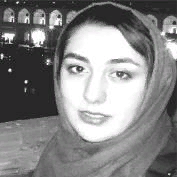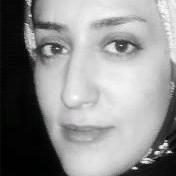International Journal of Image, Graphics and Signal Processing (IJIGSP)
IJIGSP Vol. 8, No. 8, 8 Aug. 2016
Cover page and Table of Contents: PDF (size: 906KB)
An Automatic Video-based Drowning Detection System for Swimming Pools Using Active Contours
Full Text (PDF, 906KB), PP.1-8
Views: 0 Downloads: 0
Author(s)
Index Terms
Drowning Detection, Contour, Color Space Analysis, Real-Time Image Processing
Abstract
Safety in swimming pools is a crucial issue. In this paper, a real time drowning detection method based on HSV color space analysis is presented which uses prior knowledge of the video sequences to set the best values for the color channels. Our method uses a HSV thresholding mechanism along with Contour detection to detect the region of interest in each frame of video sequences. The presented software can detect drowning person in indoor swimming pools and sends an alarm to the lifeguard rescues if the previously detected person is missing for a specific amount of time. The presented algorithm for this system is tested on several video sequences recorded in swimming pools in real conditions and the results are of high accuracy with a high capability of tracking individuals in real time. According to the evaluation results, the number of false alarms generated by the system is minimal and the maximum alarm delay reported by the system is 2.6 sec which can relatively be reliable compared to the acceptable time for rescue and resuscitation.
Cite This Paper
Nasrin Salehi, Maryam Keyvanara, Seyed Amirhassan Monadjemmi,"An Automatic Video-based Drowning Detection System for Swimming Pools Using Active Contours", International Journal of Image, Graphics and Signal Processing(IJIGSP), Vol.8, No.8, pp.1-8, 2016. DOI: 10.5815/ijigsp.2016.08.01
Reference
[1]Foresti, Gian Luca, Petri Mähönen, and Carlo S. Regazzoni, eds. Multimedia video-based surveillance systems: Requirements, Issues and Solutions. Vol. 573. Springer Science & Business Media, 2012.
[2]Jones, Graeme A., Nikos Paragios, and Carlo S. Regazzoni, eds. Video-based surveillance systems: computer vision and distributed processing. Springer Science & Business Media, 2012.
[3]Conde, Cristina, et al. "HoGG: Gabor and HoG-based human detection for surveillance in non-controlled environments." Neurocomputing 100 (2013): 19-30.
[4]Wang, Xiaogang. "Intelligent multi-camera video surveillance: A review." Pattern recognition letters 34.1 (2013): 3-19.
[5]Gudyś, Adam, et al. "Tracking people in video sequences by clustering feature motion paths." Computer Vision and Graphics. Springer International Publishing, 2014. 236-245.
[6]Vezzani, Roberto, Davide Baltieri, and Rita Cucchiara. "People reidentification in surveillance and forensics: A survey." ACM Computing Surveys (CSUR) 46.2 (2013): 29.
[7]Bierens, Joost, and Andrea Scapigliati. "Drowning in swimming pools." Microchemical journal 113 (2014): 53-58.
[8]Zhang, Chi, Xiaoguang Li, and Fei Lei. "A Novel Camera-Based Drowning Detection Algorithm." Advances in Image and Graphics Technologies. Springer Berlin Heidelberg, 2015. 224-233.
[9]Fei, Lei, Wang Xueli, and Chen Dongsheng. "Drowning Detection Based on Background Subtraction." Embedded Software and Systems, 2009. ICESS'09. International Conference on. IEEE, 2009.
[10]Kharrat, Mohamed, et al. "Near drowning pattern detection using neural network and pressure information measured at swimmer's head level." Proceedings of the Seventh ACM International Conference on Underwater Networks and Systems. ACM, 2012.
[11]Kam, Alvin H., Wenmiao Lu, and Wei-Yun Yau. "A video-based drowning detection system." Computer Vision—ECCV 2002. Springer Berlin Heidelberg, 2002. 297-311.
[12]Chan, Kwok Leung. "Detection of swimmer using dense optical flow motion map and intensity information." Machine vision and applications 24.1 (2013): 75-101.
[13]Pleština, Vladimir, and Vladan Papić. "Features analysis for tracking players in water polo." 16th International Conference on Automatic Control, Modelling & Simulation. 2014.
[14]Wang, Hua, and Sing Kiong Nguang. "Intelligent and Comprehensive Monitoring System for Swimming Pool." International Journal of Sensors Wireless Communications and Control 3.2 (2013): 85-94.
[15]Kim, Jong Sun, Dong Hae Yeom, and Young Hoon Joo. "Fast and robust algorithm of tracking multiple moving objects for intelligent video surveillance systems." Consumer Electronics, IEEE Transactions on 57.3 (2011): 1165-1170.
[16]Kim, Wonjun, and Changick Kim. "Background subtraction for dynamic texture scenes using fuzzy color histograms." Signal Processing Letters, IEEE 19.3 (2012): 127-130.
[17]Wang, Yu-Chen, et al. "The color identification of automobiles for video surveillance." Security Technology (ICCST), 2011 IEEE International Carnahan Conference on. IEEE, 2011.
[18]Gonzalez, Rafael C. "RE woods, Digital Image Processing." Addison–Wesely Publishing Company (1992).
[19]Oliveira, V. A., and A. Conci. "Skin Detection using HSV color space." H. Pedrini, & J. Marques de Carvalho, Workshops of Sibgrapi. 2009.
[20]Sural, Shamik, Gang Qian, and Sakti Pramanik. "Segmentation and histogram generation using the HSV color space for image retrieval." Image Processing. 2002. Proceedings. 2002 International Conference on. Vol. 2. IEEE, 2002.
[21]Pitas, Ioannis. Digital image processing algorithms and applications. John Wiley & Sons, 2000.
[22]Li, Xi, et al. "A survey of appearance models in visual object tracking." ACM transactions on Intelligent Systems and Technology (TIST) 4.4 (2013): 58
[23]Sun, Xin, Hongxun Yao, and Shengping Zhang. "A novel supervised level set method for non-rigid object tracking." Computer Vision and Pattern Recognition (CVPR), 2011 IEEE Conference on. IEEE, 2011.
[24]K.R.Ananth, S. Pannirselvam,"A Geodesic Active Contour Level Set Method for Image Segmentation." International Journal of Image, Graphics and Signal Processing (IJIGSP) 4.5 (2012): 31-37.


